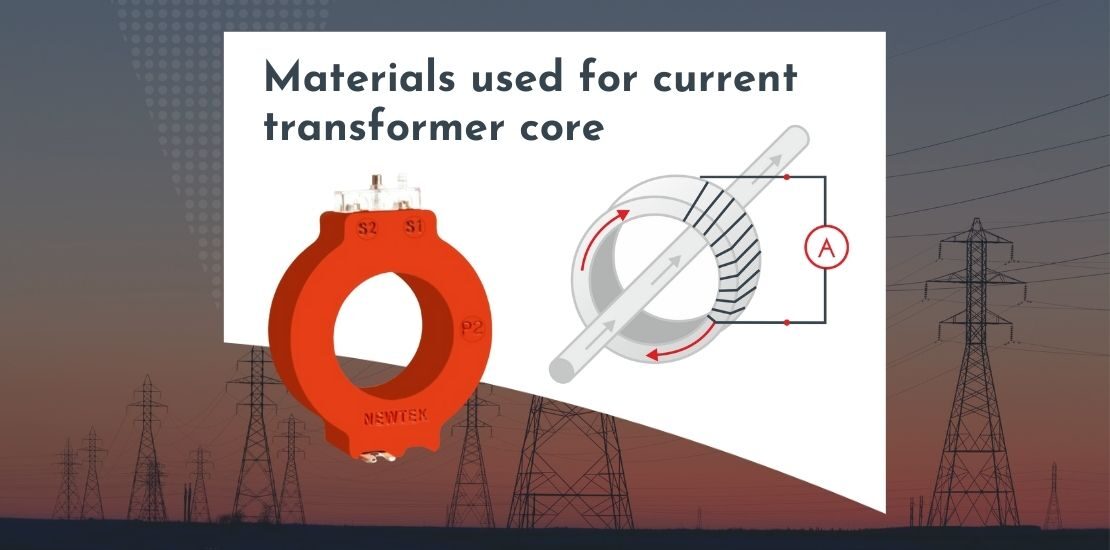- December 18, 2021
- Posted by: Dyaneshwar Nirmale
- Category: Digital Meters

When a current transformer steps down the current, it flows into the primary windings and out of the secondary windings in a stepped-down state. The current transformer is driven by the flux between the windings. The pathway for the flux is provided by the core of the current transformer. Hence, the material composition of the current transformer is vital for a smooth and reliable flux pathway.
The material used for the current transformer core should have high permeability. Permeability is the ability of a material to enable the formation of a magnetic field within itself, also known as distributed inductance.
Permeability of magnetic materials allows the magnetic field to be confined within the current transformer. It is an important factor in the selection of materials for the current transformer core.
The present blog dwells on various high-permeability magnetic materials used to construct the current transformer core.
Amorphous Steel current transformer core
Composition: The amorphous steel core is made from several paper-thin metallic tapes which aid in reducing the flow of eddy currents.
Key benefit: This current transformer core has lower losses and can operate flawlessly in high operating temperatures.
Amorphous cores are typically used in high-efficiency transformers operating at medium frequencies.
Solid iron current transformer core
Composition: Solid iron current transformer is made up of laminated silicon steel. A solid iron current transformer core is not recommended for current transformers in AC applications as its magnetic field produces large eddy currents.
Key benefits: The solid iron CT core helps retain the CT’s magnetic field without iron saturation. Laminated silicon steel in the CT core helps reduce the eddy currents to a certain extent.
Ferrite ceramic current transformer core
Composition: Ferrie ceramics are ceramic compounds made up of one or more metallic elements combined with iron oxide. The ceramic materials can be produced in various specifications to meet certain electrical requirements.
Key benefits: Current transformer core made from ferrite ceramics offers good insulation and help reduce eddy currents
Ferrite ceramics are typically used in high-frequency applications
Laminated magnetic current transformer core
Composition: This core features an insulating layer covering the iron sheet.
Key benefits: The insulators prevent the occurrence of eddy currents and confine them to the loops inside the lamination layers. The thin lamination also minimizes the effects of eddy currents.
Carbonyl iron current transformer core
Composition: This core is composed of powdered carbonyl iron. It has a small iron sphere coated with an insulating layer.
Key benefits: The carbonyl iron current transformer core serves stably and reliably at various temperature levels. The insulation coating reduces the effects of eddy currents at high temperatures.
Silicon steel current transformer core
Composition: Silicon steel is a ferritic alloy of iron and silicon, possessing magnetic properties. The metal also has high electrical resistivity. In recent times, the properties of silicon steel were chemically altered to produce a material known as AISI type M6.
Key benefits: The new M6 silicon steel has high permeability and low losses. It is typically used in high-performance applications.
Conclusion
The composition of CT core is a critical factor in choosing the right current transformer for your application. The inputs from a trusted and experienced current transformer manufacturer could help you choose a current transformer with the right core. Newtek Electricals has over a decade of experience and expertise in the design and manufacturing of current transformers. A focus on technology and innovation has allowed us to deliver reliable and cost-effective current transformers in the shortest possible lead time.
If you have any questions or queries on multifunction meters, write to us at sales@newtekelectricals.com
